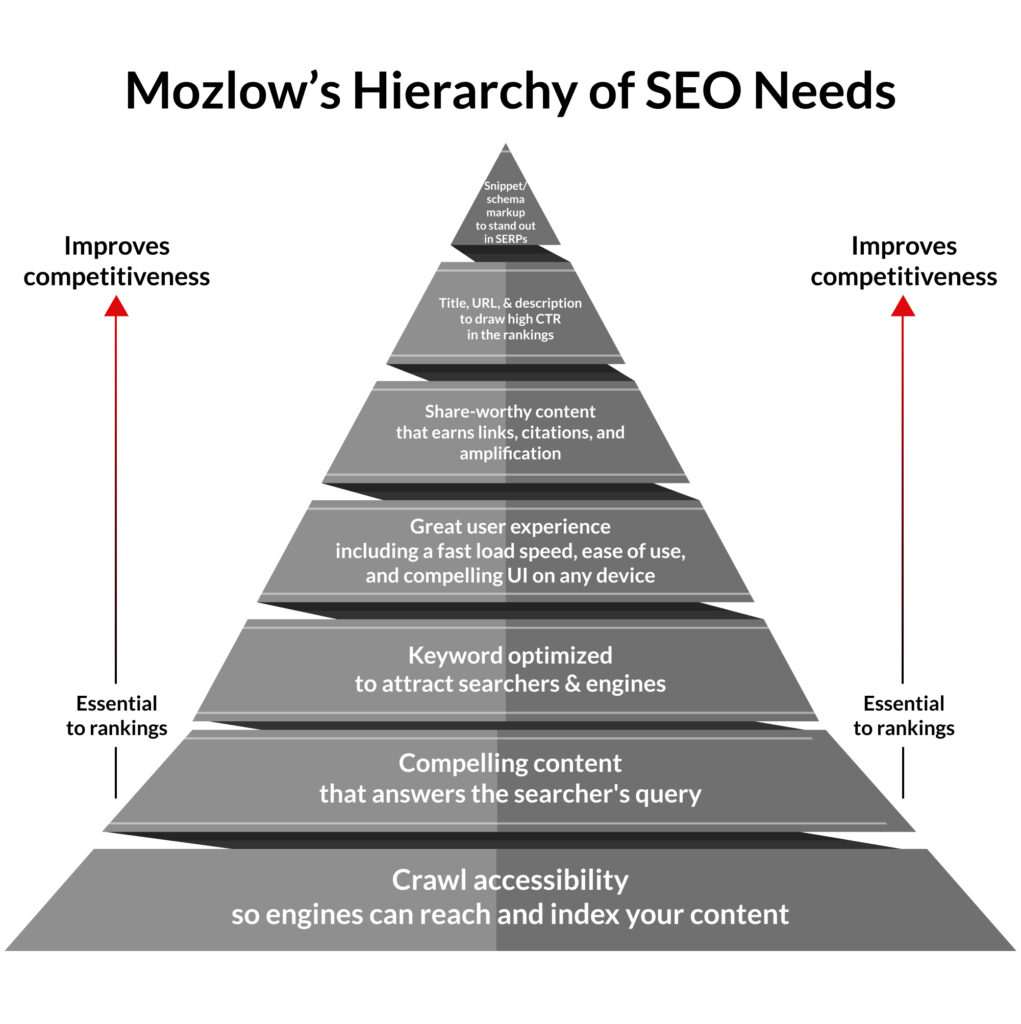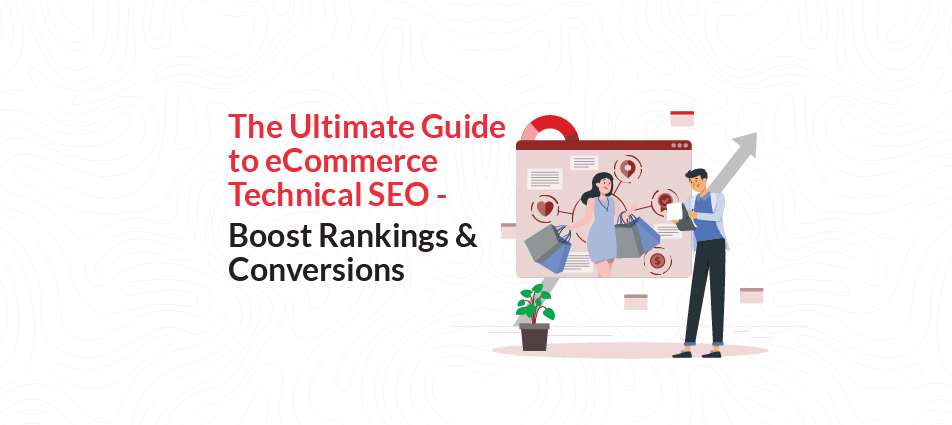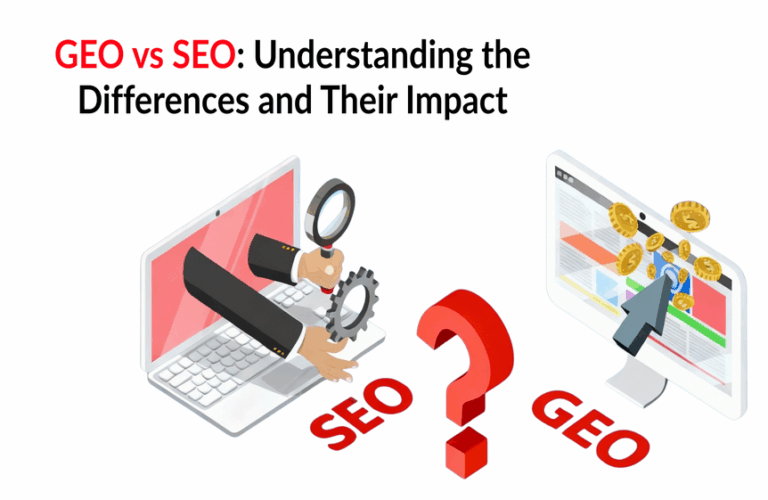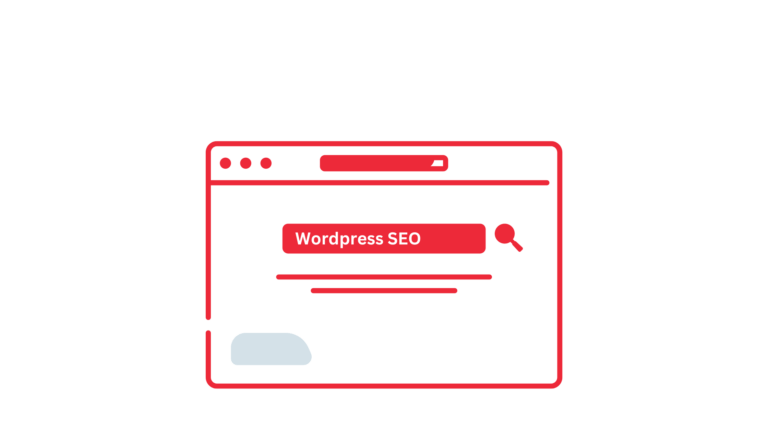The Ultimate Guide to eCommerce Technical SEO – Boost Rankings & Conversions
ECommerce Technical SEO is the strong pillar of an effective digital strategy. It makes possible the crawling, indexing, and ranking of product and category pages by search engines, which informs potential buyers. Without great technical SEO eCommerce, even the most exquisite product descriptions and highest quality images cannot reach the target audience. Speeding site up, optimizing structured data, making mobile included, and refining URL structure-these are just some things that technical ecommerce SEO services accomplishes in making the shopping experience worry-free.
A well optimized e-commerce site not only improves visibility in search engines results but also engages users in the website and increase conversion rates. Businesses have spent on eCommerce technical SEO; now their competitive edge will be having higher organic traffic yet lower bounce rates. Removing all the technical barriers would, therefore, create a very smooth shopping experience to result in higher sales with a better brand reputation. The understanding and implementation of these technical SEO elements is no longer an option for eCommerce but a necessity if they want to succeed in the long term.
What is Technical SEO for eCommerce & Why It Matters?
ECommerce Technical SEO can be understood as optimizing the back-end structure of an online store to enable search engines to crawl, index, and rank the pages effectively. Whereas content-focused SEO is pretty different, eCommerce technical SEO akes sure of a crash, speed, and user-friendliness of a site.
The Major Benefits of Technical SEO for eCommerce Online:
Following are the major benefits of technical SEO services for ecommerce:
- Improved Performance & Increased UX: An optimized site well saves time for a better experience retaining even those who visit the site. Speedier page lifts nudges the shopping experience towards positive directions in enhanced engagements and retentions. Incorporating this kind of modern design enables users to browse easily, add products to their cart, and pay for purchases without causing delay while enhancing overall performance.
- Better Mobile and Core Web Vitals Scores: Technical optimizations would have the maximum impact on how this would play out, as Google continues to put mobile first, and, therefore, Core Web Vitals—such as Largest Contentful Paint (LCP), First Input Delay (FID), and Cumulative Layout Shift (CLS)—need enhancement to ensure intelligent site responsiveness and interactivity. That is why a mobile-friendly, well optimized site has high usability value when it comes to being shopped for via smartphones and tablets.
- Greater Organic Traffic and Conversions: Find a technically sound website crawled and indexed easily by the search engine, making it highly discoverable in search results. Improved site structure, faster load speeds, and error-free pages contribute to better rankings, attracting more qualified traffic. Highly likely to convert-just a few steps away from a seamless shopping experience-happens to almost all visitors towards greater revenue growth coming from increased conversion rates.

Ecommerce Technical SEO Audit: Key Areas to Focus on
First and foremost, a thorough technical SEO eCommerce audit should be done to discover and rectify all issues that obstruct the way of the search engine indexing process and user experience before any kind of technical ecommerce SEO implementation. An eCommerce audit would help in identifying crawls errors, duplicate content, and bad site structure since all of these would bring down a site ranking. Most importantly, removing these technical barriers makes them visible in the search engine, engages them better, and converts them into sales.
Crawlability & Indexability – Ensuring Search Engines Accessibility
To get your eCommerce pages discovered and ranked, maintaining a proper crawlability and indexability of the pages becomes imperative. Optimizing the site structure and fixing an issue that may prevent indexing promote visibility and ensure that significant pages appear in the search results.
- Using Google Search Console to check for crawl errors and indexing problems of the site – A record of how the search engines interact with your website is provided by Google Search Console, and crawling errors like soft 404s and 404 pages should be checked regularly so that pages are not left important in terms of indexing access for the users.
- Check for blocked pages in robots.txt and ensure access to all significant pages – The robots.txt file specifies what page search engine bots should and should not crawl. Checking that important product and category pages are not accidentally blocked provides an indexing problem and poor visibility in search results.
- Solve all the noindex tags, orphan pages, and canonical tag issues to resolve duplication- Orphans are pages lacking internal linking and they should be linked to enable easy discoverability. Value pages should not be used by noindex tags since this would exclude them from search results. Canonical tags should also be properly used to make duplicates in content versions consolidated.
XML & HTML Sitemaps – The Store for Search Engines.
Structured well, a sitemap is what makes the search engines able to access your technical SEO eCommerce, platform and crawl it with efficiency and index it for reference.
- XML Vs. HTML Sitemaps– While HTML sitemaps improve user navigation, the XML sitemap is meant to give search engines directions to important pages like the key product and category pages.
Essentially, XML serves as a roadmap within which search engines are directed to vital pages, such as product and category pages, in a website. Meanwhile, an HTML sitemap improves user experience by helping visitors easily find the content they need.
- Submit sitemaps to Google Search Console and Bing Webmaster Tools- Upload sitemaps to Google Search Console and Bing Webmaster Tools once you’ve created a sitemap and both will be made aware of the new and revised pages, enhancing the chances of including them in relevant search results.
- Updating sitemap regularly with new product pages will speed up the indexing process- A dynamic and regularly updated sitemap guarantees that new product listings are indexed promptly. This is especially important in e-commerce when products come in or go out often, enabling a business to keep high visibility in search.
Robots.txt-Crawling Control for Search Engines
Managing search engine crawlers is quite a task in the process of optimizing the crawl budget and indexing strategy of an eCommerce site.
Control specific areas of your website for efficient crawling access or denial- The robots.txt file will also control search engine bots: restrict some areas like admin page and sensitive user data access. Proper configuration controls relevant pages to crawl and index.
Prevent cart, checkout and duplicate filter pages from crawling- Blocking such checkout pages, shopping carts, and filter-generated URLs actually saves the crawlers’ budget. Search bots will index their high-value content instead, thus improving performance.
Optimizing Website Architecture & URL Structure: Technical SEO
The fact that an eCommerce well-organised site architecture enables effective and easily accessible search and discovery by search engines and the users themselves is the basis of eCommerce technical SEO helps reduce page depth under crawl efficiency, while at the same time optimizing user experience (UX). Hence, the well-structured hierarchy and URL structure within the business site have significant impact on improvement of rankings, uplift in organic traffic, and an increase in effective engagement.
Best practices for the eCommerce URLs structure
Following are the best practices to be followed for technical SEO eCommerce URLs structure:
- Keep short, keyword-rich, and easy-to-read URLs: These are the kinds of URLs that should be clean, descriptive, and packed with important keywords in a bid to play a role in improving search visibility. A URL should be short and meaningful to both the users and the search engines so that they can quickly comprehend the page content for effective click-throughs (CTR).
- Avoid dynamic auto-generated session-based URLs: URLs containing long query strings, session IDs, or unnecessary parameters create confusion for search engines as well as duplicate content problems. They need to ensure static URLs built up from clear folder structures to enhance indexability and usability.
- Example: example.com/shoes/best-running-shoes instead of example.com/cat=5/item=xyz123.
A well-structured URL, like example.com/shoes/best-running-shoes, provides context to both users and search engines, making it more SEO-friendly. In contrast, URLs filled with random characters and parameters can harm rankings and discourage users from clicking.
Internal Linking and Navigation Optimisation Strategy
A comprehensive understanding of an internal linking strategy would also lead to a better user experience combined with crawability by search engines through:
- Using breadcrumb navigation to increase SEO and UX value frankly: Breadcrumbs allow users to clearly find their way around the site as well as improved internal linking for search engines, thus decreasing bounce rate because navigation is clear and organized.
- Linking of product and category pages for page authority distribution: The internal link must build a bridge from the related product to category pages to make navigation fluid and extend link equity across the link. This scheme further firms the authority of interior pages and makes it more likely to get ranking higher.
- Identify orphan pages and correct them where they are those that have not been linked from anywhere in the site: Such orphan pages remain without internal links which means they hardly get crawled and indexed by search engines. Linking all important pages into the site structure improves discoverability and performance for the overall technical ecommerce SEO boost.
Maslow’s Hierarchy of SEO Needs: Your Competitive Edge
(refer: https://www.resultfirst.com/wp-content/uploads/2022/07/Mazlow-needs-of-SEO.png)
Maslow’s Hierarchy of SEO Needs provides the ladder of fundamental and advanced maneuvering strategies through which one can achieve higher search rankings and compete successfully over the long term. Starting with crawl accessibility and compelling content, the website must progressively get better in keyword optimization, user experience, and eventually shareability, since businesses now have improved visibility, engagement, and conversions in search through the implementation of structured data and refined metadata. Start small, build up to better rankings and top-notch competitiveness.
| Maslow’s Hierarchy of SEO Needs | |
| Crawl Accessibility | Ensure that your content is discoverable and indexed by search engines. |
| Compelling Content | Craft content that provides information of value and that directly solves the search queries. |
| Keyword Optimization | Use relevant keywords in strategic positions to lure the attention of search engines and users. |
| Excellence in User Experience (UX) | Prioritize fast loading time, mobile capabilities, as well as an easy-to-use interface. |
| Shareable Content | Produce that content which earns links and references naturally by earning links, shares and citation. |
| Optimizing Titles, URLs & Descriptions | Create clear, compelling meta elements that will increase the CTR as well as the rankings. |
| Schema Markup & Rich Snippets | Utilize structured data to amplify visibility in, and create a distinction in, search results from others. |
Site Speed & Core Web Vitals Optimization for eCommerce
Google’s set parameters for page experience ranking measures site speed and Core Web Vitals, which the high-and-mighty eCommerce technical SEO branch, made easy for all aspects of eCommerce. Losing anything in speed makes it a miserable experience for a user because speeding up downloads increases execution time and converts the visitor into a buyer. Core Web Vitals, which include Largest Content Paint (LCP), First Input Delay (FID), and Cumulative Layout Shift (CLS), are modern techniques for improving search-ranking performance and increasing customer satisfaction.
- Reduce the Shopping Time per Page for Your Customers:
- Optimizing images through WebP and lazy loading.
- Large image files cause pages to slow down and hence have a negative effect on user experience.
- WebP converts images to a lower resolution without a loss of quality, while lazy loading only loads images on demand and thus prevents using this time at the time of initial loading of the page.
- Content Delivery Networks Complete Content Delivery Faster:
Technical SEO for eCommerce distributes the entire content of a website over multiple servers present globally, so a user is able to access the site faster based on the location on which he is. This also reduces latency, improves performance, and avoids downtime during traffic spikes.
- Reducing Server Response Times And Browser Caching:
It also enables the use of faster hosting along with optimized HTTP requests, significantly improving the loading speed of pages. Such browser caching saves static elements of a website on users’ devices such that for their successive visits, such elements need not be loaded each time the user visits.
Mobile Optimization – Google Mobile First Indexing
Since Google is using mobile-first indexing, ensure that your eCommerce site is fully optimized for mobile through the following:
- Responsive Design for Mobile Shoppers: Responsive design is such that it will respond to different screen sizes. A mobile-friendly site behaves in the same way across all devices and provides a consistent experience. A responsive design plays a significant role in user engagement, bounce rate reduction, and Google mobile-first indexing.
- Fixing Mobile Usability through Google Search Console: Use Google Search Console to find any mobile usability issues and thus solve them. Google Search Console reveals mobile usability issues such as text too small or clickable elements too close together. A routine technical ecommerce SEO audit can help fix such issues to give an optimal mobile shopping experience.
Structured Data and Schema Markup for eCommerce SEO
While referencing schema markup as a type of structured data is correct, many products can benefit from elevated mechanisms for structured data to advertise themselves in several wayports where they can be electronic and vitally engage. Therefore, in applying the structured data, a product can be positioned better in search engines and improve the entire SEO performance.
Key Schema Types for eCommerce Websites
The following are the main Schema types for eCommerce websites:
- Product Schema (Price, Availability, Ratings) enhances visibility in SERPs: Product schema lets Google showcase vital information in search results like price, availability, and customer ratings. This way, the schema enhances user engagement and helps the product stand out.
- FAQ Schema enriches category pages with structured answers: The FAQ Schema has increased visibility by displaying these question-and-answer pairs as rich snippets. Therefore, it improves the user experience and adds organic traffic to the product and category pages.
- Breadcrumb Schema enhances navigation and improves user experience: Breadcrumb Schema guides search engines about site structure while endowing users with easy navigation. This improves internal linking, decreases the bounce rate, and renders the site more usable.
Technical SEO for eCommerce Product and Category Pages
The next thing for technical SEO for ecommerce is upwards of ranking the search and improves conversion, so these pages are essential. The modeling of these pages should intensify SEO and user experience (UX) and permit the fast crawling and indexing of these pages by search engines. Correctly addressing duplicate content, pagination, and faceted navigation improves visibility whilst avoiding indexing issues.
Duplicate Content Management in eCommerce
Managing duplicate content in technical SEO ecommerce involves the following:
- To ensure easy management of different types of product variants (size, color, and material), they should use canonical tags.
Products found on eCommerce sites create multiple versions of the same product because of variants such as size, color, and material. Canonical tags communicate to the search engines one version of the product as the main webpage so that all ranking power is consolidated on this main page and the potential duplicate content issue is resolved.
- Parameter handling in Google Search Console to keep duplicate pages from indexing.
Many eCommerce sites create dynamic URLs, appending parameters for sorting, filtering, and tracking (e.g., ?sort=price and ?color=blue) to the basic product page URL. In Google Search Console, you can set how to handle search engines regarding these parameters so that they do not index unnecessary duplicate pages.
SEO Pagination and Faceted Navigation Management for SEO
Pagination and faceted navigation need to be handled correctly to avert duplicate content problems and to make sure search engines can crawl and index your eCommerce site properly.
- Use rel=prev/next tags to indicate pagination correctly.
Large and major eCommerce stores will easily have paginated product listings. rel=prev/next tags should be added so that search engines understand the order of paginated content in a way that all pages will be indexed properly, preventing dilution of content.
- To avoid duplicate content problems, block indexing of unnecessary filtered pages with no index.
Faceted navigation (e.g., filters used to find prices, brands, and sizes) can create a host of similar pages that may prove ineffective for crawling and become a problem for duplicate content. With respect to no indexing non-essential filter pages, non-indexing would mean good followership by the link within the site.
Advanced Technical SEO Strategies for eCommerce
Above and beyond the basic eCommerce technical SEO measures, the advanced strategies further add much visibility and traffic. With the new trends of online voice search and local search, optimization for natural language queries and location-based search guarantees that the store stays competitive.
Voice search optimization for eCommerce
Due to the growing population of online shoppers who utilize voice queries to look for products, it is now essential to optimize for voice search.
- Natural-language queries with long-tail keywords- Users of voice search will ask whole questions instead of just types of keywords. This means incorporating long-tail conversational keywords (e.g., “Where can I buy the best running shoes near me?”) into product descriptions and FAQ sections, thus increasing the chances of appearing and ranking in voice search results.
- Structure content to answer voice-enabled shopping searches – Search engines tend to favor direct answers to these types of queries. This means that the more structured the content with FAQ sections, schema markup, and brief product specifications, the better the chance of appearing in the featured snippet section of Google and being selected by voice assistants like Siri and Alexa.
Local SEO for E-Commerce Entities
With local SEO, eCommerce stores with a physical location are visible in location-based searches and Google Maps, attracting customers nearby.
- Google Business Profile creates visibility for the local store.
If your eCommerce brand has physical retail locations, having a Google Business Profile will improve local ranking from searches. The more business information such as the store address, contact number, operating hours, and reviews, is updated, improving visibility on Google Search and Google Maps.
- Optimize Store Locator and Location-Based Landing Page.
Having store locator pages and city-based landing pages (for example, “Best running shoe store in New York”) help businesses score points on location-based searches with local keywords. Regulations with tools such as LocalBusiness Schema will further increase search engine understanding and enhance the ranking of local technical ecommerce SEO.
Checklist for eCommerce Technical SEO- Common Mistakes to Avoid
Technically optimized eCommerce sites serve a dual purpose: visibility in search engines and a pleasant shopping experience for customers. Some of the general technical SEO mistakes crop up mainly in e-commerce online retailers such as a slow site speed, duplicate content issues, and improper use of structured data concerning these. Fixing the SEO errors will have significant changes in rankings, organic traffic, and overall better shopping experience.
ECommerce Technical SEO Mistakes Damaging eCommerce Rankings
- Failure to address critical technical SEO problems can be punishing to an eCommerce store.
Duplicate content, slow site speed, harvest of poor internal linking, and badly formed structured data will circumvent search engines from correctly indexing pages; the outcome is traffic loss and lowered conversion rates.
- Ignoring canonical tags leads to duplicate content.
Without proper canonical tags, search engines may index multiple versions of the same page, diluting page authority and leading to lower rankings. It may confuse internal reasoning about which version of the page should be ranked in search results.
- Poor mobile page speed results in less user engagement.
A slow mobile site frustrates the customer and, as a result, increases the bounce rate while decreasing the conversion rate. Google favors faster loading websites when it ranks them, hence speed optimization becomes an important requirement for better visibility.
- It reduces crawlability; and page authority.
Poor internal linking; No internal linking strategy is structured. Without it, search engines fail to discover and index critical pages, significantly reducing their visibility in search engine results. Proper in linking distributes link equity, thereby boosting rankings for important category and product pages.
- Unoptimized structured data will effectively reduce the chance of appearing in rich results.
Structured data creates an understanding with the search engines of the products regarding their prices, ratings, availability, and more. Click-throughs improve due to this. When either absent or improperly implemented, that eCommerce site lacks the chance to appear in enhanced search results such as rich snippets.
- Incorrect Robots.txt setup blocking important pages.
Misconfigured robots.txt will keep away several important pages from the search engine because an incorrectly configured robots.txt file can block implicitly crawlers to come across the highly essential product and category pages. Such pages will have poor indexation; thus they would be invisible in searches and affect organic traffic.
Case Studies – How Technical SEO Supported eCommerce Stores Scale
These case studies present how eCommerce technical SEO made the difference in attaining growth for eCommerce stores. By resolving these technical hindrances, the businesses were able to incubate increased organic traffic, better rankings, and conversion rates.
- Crawlability & Indexing Fixes for an eCommerce Store – Fixing blocked pages allowed search engines to properly index important product and category pages, leading to a 50% increase in organic traffic. By resolving issues in robots.txt, meta tags, and sitemap configurations, the store experienced improved visibility, higher rankings, and more engagement among users.
- Internal Linking Boost in a Large eCommerce Site – An effective category-to-product linking strategy improved the site structure and thus ensured better flow of link equity. This led to higher ranking of major product pages that became more discoverable in search results. Consequently, organic traffic flow and conversion rates have surged.
- Image Optimization & Site Speed Case Study – By rendering WebP image formats while optimizing image delivery, the site could contribute significantly to page load speed, thereby augmenting user experience. With faster-loading pages, there was a spur in conversions by 30 percent, allowing shoppers to browse products with ease and check out without delays.
Final Thoughts Technical SEO for Long-Term eCommerce Growth
Implementing technical SEO is not a patchwork but a long continuous process geared for the growth of eCommerce. It improves crawlability, indexing, and user experience by creating a shopping journey that is adored by clients and preferred by search engines. Perform regular audits of your eCommerce store while keeping all structured data updated and optimized for site speed, to remain a step ahead of competitors and flexible to Google’s ever-changing algorithms. Duplicate content, bad internal linking, and mobile unoptimization are issues that can lower rankings and diminish organic traffic if not properly addressed.
Don’t let technical hiccups stand in the way of your eCommerce! Opositive’s SEO experts specialize in making eCommerce sites visible, driving traffic, and increasing conversions for good reason. Let your eCommerce technical SEO headaches be ours while you take care of building your business.
Partner withOpositive today to accelerate your technical ecommerce SEO success!
An On-Page SEO Strategy for the eCommerce Websites
Finding Proper Keywords-Research and deciding keywords that match user search intent.
Create Quality Content– Create content that is informative, engaging, and properly optimized.
Natural Placement of Keywords– Keywords should be placed keeping the layout of the content in mind rather than excessive high-frequency density.’
Optimize URL Structure– Keep URLs short, meaningful, and full of keywords.
Use Proper Image Optimization– Compress images and give them alt text to facilitate indexing.
Smart Internal Linking– Provide links to internal pages for easy navigation and SEO benefits.
A Good User Experience- Make sure pages load fast, mobile optimize, and easy to navigate
Get Analytics Insight– Analyze the performance with the help of analytics tools for improvement.














